By Premlata Venkataraman   Â
e-mail: ThePatrika@aol.com
 Home, country, kinship can mean different things at various stages in your life. Confusing? Maybe not. For those of us who were born in one nation, but now call another our home, these concepts have been shifting. Ponder this: for many of us going to India on our first visit after being here for several years, it brings forth choking emotions of nostalgia, love for the place and people, self-doubt on our leaving India, even patriotism. However, after a few decades of living in the ‘Burgh, when returning from India, just a glimpse of the Three Perennial Rivers from the plane before landing gives us the relief and comfort of being home.
Home, country, kinship can mean different things at various stages in your life. Confusing? Maybe not. For those of us who were born in one nation, but now call another our home, these concepts have been shifting. Ponder this: for many of us going to India on our first visit after being here for several years, it brings forth choking emotions of nostalgia, love for the place and people, self-doubt on our leaving India, even patriotism. However, after a few decades of living in the ‘Burgh, when returning from India, just a glimpse of the Three Perennial Rivers from the plane before landing gives us the relief and comfort of being home.
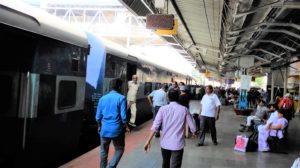
Mangalore Junction.
With nostalgia, after thirty years, last December, I created an opportunity to travel through the lands where my parents were born and lived until adulthood — small-town Kerala they were from for generations before moving to Bombay, where they raised a family.
We settled on an 8-h long train journey along the West Coast of Southern India from Mangalore to Coimbatore. I had taken this route at least ten times from childhood through my young adulthood. People talk about the past flashing before their eyes. As the train was gently going past several small stations, memories of past images gushed past in my mind as I was looking through the window!
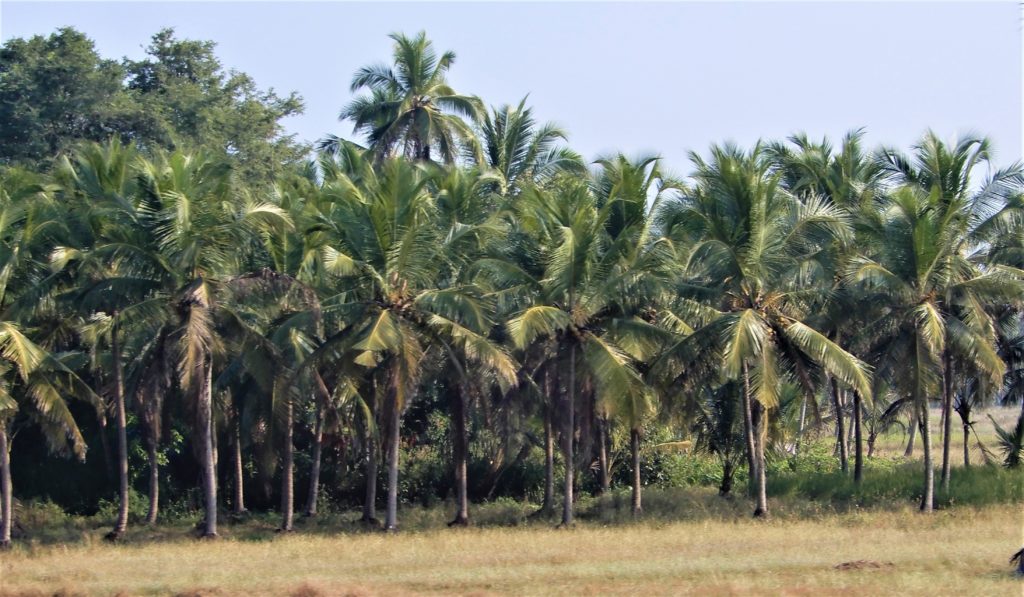
Coconut palms just 50 yards away from the railway track.
We boarded the train early in the morning at Mangalore Junction after going to the famous Mookambika and Udupi Temples. As the early sun was drenching the landscape with light, the train was gently going past a land of coconut groves densely dotting the green paddy fields. Acres and acres of green fields, stretched on a land watered by plenty of streams and rivers. Backwaters washed over the land, with bobbing fishing boats headed out to the Arabian Sea visible through the window.
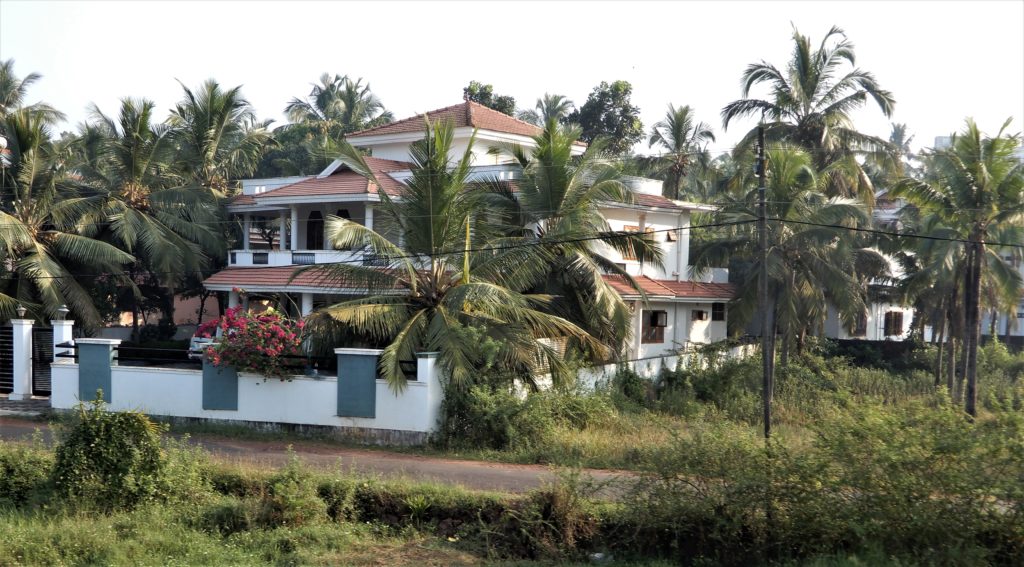
One of the countless homes along the track nestled around coconut palms.
The scene was so reminiscent of the many trips I had taken in my childhood traveling from Bombay to Kerala to visit grandparents and family. I distinctly remember now, as you enter Kerala from Coimbatore, the changing landscape from Tamil Nadu was so sudden and dramatic. That is why India has so many diverse languages and food preferences.
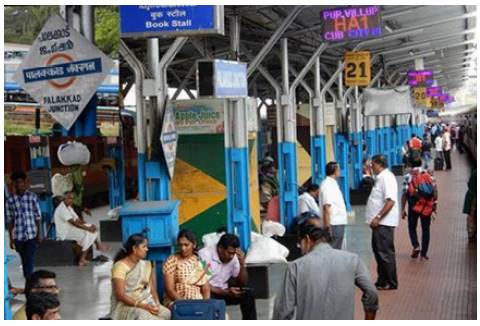
Palakkad Junction, nostalgically familiar to those from Kerala.
We passed through Kannur where my maternal grandfather taught mathematics and accounting at the European High School — the grandfather, I remember, wore a linen jacket and a cotton turban. We moved on to Thallassery, famous for black pepper, the home of my mother and her large family, onto Mahe, my father’s hometown. The train chugged on through Badagara where my parents lived for a short time before moving to Bombay. I re-lived the many stories told by my relatives at several family gatherings in my childhood.
About the Indian railways in South India: Having traveled in European and US trains, I must say, the Indian Railways system does an amazing job, when you consider that over 10 million people are on long-distance trains every day, and how relatively affordable the second-class tickets are to average Indians. A great improvement in the trains is new toilets that collect waste products, like in airplanes, leaving the railway tracks en route clean.
Ticket purchase is now as easy as on-line booking of airline tickets. The tickets give all the information of compartment number, (as the rail cars are called in India), its placement on the station platform and seat numbers. You are able to board the train with comfort and with no anxiety. The railway platforms in big stations are typically 1000 yards long. South Indian train stations are clean with enough seating for weary travelers. The longest trains, with 24 rail cars, are over 650 yards long.
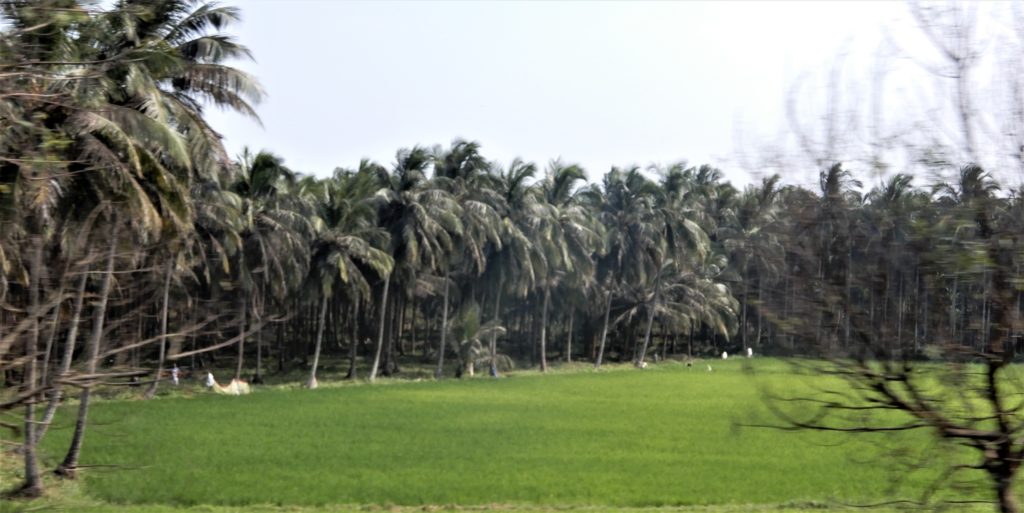
Verdant paddy fields in front of coconut palms — a common sight in central Kerala.
The railway staff was courteous and professional. A new development that pleased me was: all employees at stations waving the trains off were women in smart uniforms! Also, now women are in the driver’s seat, running the heavy electric locomotives in suburban trains as well.
The range and quality of food at the South Indian railway stations did not disappoint me. The food and newspaper stalls are all privatized, with lots of local delicacies. Snack packs of salty banana chips, cookies, halwas, crackers, and murukkus are available everywhere.
We had appam and stew for breakfast at the station. Our boxed lunch of rice, sambar and yoghurt too were served fresh. Nonvegetarian lunches too are available. One suggestion if you are travelling in long-distance trains: Take paper napkins, fork/spoons and bottled water before leaving home; and also some large trash bags to put all the waste you will generate.
The short 8-hour ride through a familiar, beautiful route made me nostalgic. So, if you have the time and the opportunity, travel in a long-distance train in India along a route familiar to you from your younger days. It is far more interesting than sterile air travel. It will bring back memories that you thought you’ve forgotten long, long ago.  ♣
